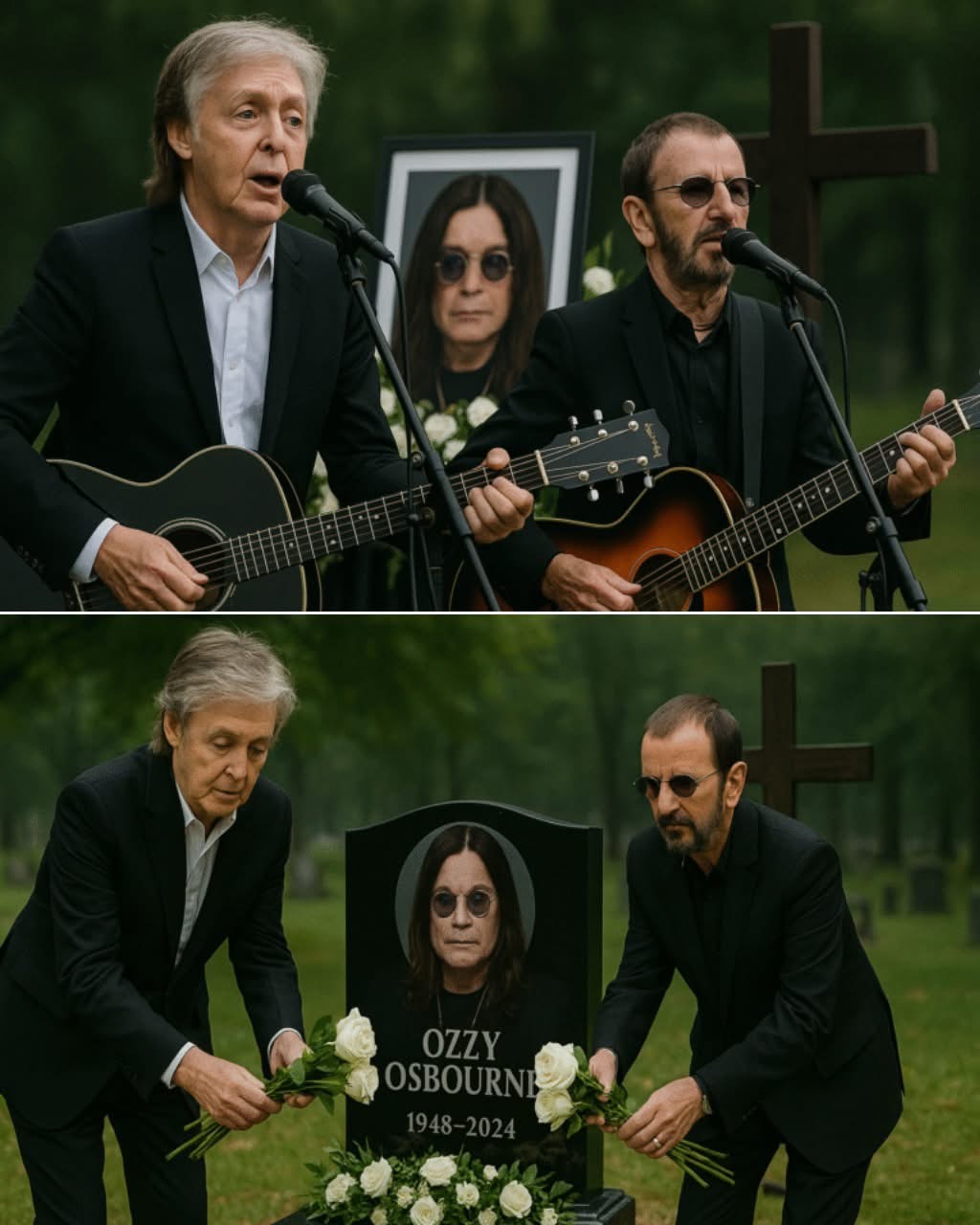Gasps echoed through the chapel as the doors opened, revealing Paul McCartney and Ringo Starr — the two surviving Beatles — walking side by side down the center aisle. Dressed in black, guitars and drumsticks in hand, the aging legends moved with quiet reverence, the weight of history trailing behind each step. Their presence alone was enough to still the room, but what followed turned a solemn farewell into something transcendent.
The chapel was bathed in soft, filtered light, the air heavy with incense and memory. Rows of mourners, from rock icons to lifelong fans, fell silent as Paul and Ringo reached the front. Ozzy Osbourne’s casket, polished ebony with silver trim, stood surrounded by white roses and black candles. A quiet tension hummed in the air — reverence, disbelief, grief. No one had expected this. No one could have.
Paul slowly slung his guitar over his shoulder. His hands trembled slightly, not just from age, but emotion. Ringo, standing to his left, gently tapped out a rhythm on the edge of a drum pad — soft, steady, like a heartbeat. It wasn’t a performance; it was a prayer.
Then Paul began to play.
His fingers found a delicate, haunting melody, something simple and unadorned. When he opened his mouth to sing, his voice cracked — not from lack of control, but from sorrow. The sound was unmistakably McCartney: weathered, melodic, raw with emotion. Each word landed like a stone in still water.
“We say goodbye to a brother of noise,
A voice that tore through silence and choice.
Ozzy, the wild, the true, the free —
You lived louder than life could ever be.”
Gasps gave way to tears. Ringo, his eyes glassy with emotion, added soft harmonies, his voice folding into Paul’s like smoke into air. It was not a Beatles song. It was something new — part elegy, part benediction — written just for this moment. As their voices echoed through the chapel, it felt less like a funeral and more like communion. Music became the language of mourning, their tribute a bridge between the living and the legend they had come to honor.
Behind them, the massive stained-glass window cast shifting colors on the scene: blood reds, deep blues, and golds that flickered like candlelight. The chapel’s silence held like a sacred pause between beats, as if even time itself dared not intrude.
In the pews, Sharon Osbourne clutched a handkerchief, her shoulders trembling. Behind her, a sea of faces — musicians, friends, fans — sat rapt, some with hands clasped in prayer, others simply weeping. It was clear: this was no ordinary farewell. This was the music world coming full circle. The Beatles had once revolutionized rock. Ozzy had bent it to his own dark, defiant shape. Now, they met again, not on stage, but in tribute.
As the final chord rang out, Paul stepped forward and laid a single white rose on Ozzy’s casket. He paused, leaned in, and whispered, “From one legend to another.” His voice cracked again, barely audible, but the moment needed no amplification. Ringo followed, resting a hand on Paul’s shoulder — a silent gesture that spoke volumes. No encore. No applause. Just a final nod between giants.
When they turned to leave, the silence held. Only the soft creak of the floorboards beneath their feet interrupted the stillness, as though the chapel itself bowed in respect. No words were needed. The music had said it all.
Ozzy Osbourne — the Prince of Darkness, the madman of metal — had received a farewell worthy of royalty. And in that sacred space, for one unforgettable moment, grief and gratitude sang in harmony.
